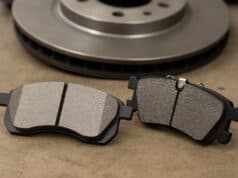When a car accident happens, it can feel overwhelming to deal with injuries, repairs, and insurance companies all at once. Many drivers try to handle the aftermath on their own, only to realize how complicated the process can become. Having experienced legal help for car accidents can make all the difference in getting fair treatment and the compensation you deserve. An attorney knows how to cut through the red tape and fight for your best interests. By seeking guidance early, you protect yourself from costly mistakes and unnecessary stress.
Why Coolant Is So Important
Coolant maintains your engine’s optimal temperature by preventing it from overheating or freezing. Without sufficient coolant, your engine can quickly overheat and sustain severe damage. The water pump housing plays a key role by keeping the coolant sealed and circulating properly.
Early Signs of a Leak You Should Not Dismiss
It is easy to overlook small changes in your car, but paying attention to the warning signs of a coolant leak can save you from costly repairs later. Here are some of the most common clues to watch for:
Puddles or Stains Under the Vehicle
If you notice green, orange, or pink liquid collecting under your car after it has been parked, it is often a sign of coolant escaping. Even small spots should not be ignored, as they can quickly develop into larger leaks.
Sweet Smell Coming from the Engine Bay
Coolant has a distinct sweet odor that can drift into the air when it leaks onto hot engine parts. If you smell this while driving or right after turning off your car, it is worth getting the system checked.
Temperature Gauge Rising or Fluctuating
A leak can cause coolant levels to drop, resulting in the engine being unable to regulate heat effectively. If your gauge shows higher-than-normal temperatures or fluctuates erratically, that is a strong warning sign of trouble.
What Happens if You Keep Driving with a Leak
Driving with a coolant leak might seem harmless at first, but the longer you ignore it, the more serious the consequences can become. Here is what you are risking by putting off repairs:
Engine Overheating and Sudden Breakdowns
Without sufficient coolant circulating, your engine will struggle to maintain a safe operating temperature. This can lead to overheating, which often causes your car to stall or leave you stranded unexpectedly.
Extra Wear on the Water Pump and Nearby Components
A leaking system forces the water pump to work harder than it should, which shortens its lifespan. Over time, the added strain can damage surrounding parts, increasing the scope and cost of repairs.
Risk of Severe Engine Failure
Prolonged overheating can warp critical components, such as cylinder heads, or even cause a complete engine breakdown. Once damage reaches this level, repair costs often skyrocket far beyond what a simple leak fix would have cost.
Long-Term Damage to Your Engine
Ignoring a coolant leak for too long can cause serious harm that goes beyond quick fixes. Overheating can warp cylinder heads, blow head gaskets, and lead to expensive engine repairs. What starts as a small leak can easily turn into lasting damage that shortens the life of your vehicle.
How Mechanics Fix Coolant Leaks Around the Water Pump Housing
When you bring your car to a shop with a suspected coolant leak, a mechanic will take a step-by-step approach to locate and repair the source properly. Here are some of the common ways they handle the problem:
Inspection and Diagnosis
The first step is to carefully inspect the water pump housing, hoses, gaskets, and surrounding parts to determine where the coolant is escaping. Mechanics may use pressure tests or specialized tools to detect even small leaks that are difficult to spot.
Replacing the Water Pump or Seals
If the housing gasket or seals are worn out, the mechanic may replace just those parts to stop the leak. In cases where the water pump itself is damaged, a full replacement is often the most reliable solution.
Refilling and Testing the Cooling System
After repairs, the system is refilled with the correct type and amount of coolant. The mechanic will then run the engine and monitor for leaks to make sure everything is sealed and circulating as it should.
Preventing Future Coolant Leaks
The good news is that many coolant leaks can be prevented with regular attention and care. Here are a few simple ways to reduce the chances of facing this problem again:
Schedule Regular Maintenance Checks
Having your cooling system inspected during routine service can catch small issues before they turn into major leaks. Mechanics can spot worn seals, weak hoses, or loose connections that you might miss.
Monitor Coolant Levels Frequently
Checking your coolant reservoir every few weeks helps you stay ahead of slow leaks. If you notice the level dropping consistently, it is a sign that something is wrong and should be addressed immediately.
Replace Old Seals and Gaskets in Time
Rubber seals and gaskets naturally wear out due to heat and age, making leaks more likely. Replacing them before they fail can save you from costly breakdowns and keep your cooling system running smoothly.
Conclusion
Even small problems can turn into big headaches if ignored, whether it is a coolant leak or the aftermath of a car accident. Just as regular maintenance protects your engine, seeking the expertise of experienced legal help for car accidents protects your rights and financial well-being. Staying proactive and addressing issues early can save time, money, and stress in the long run.






